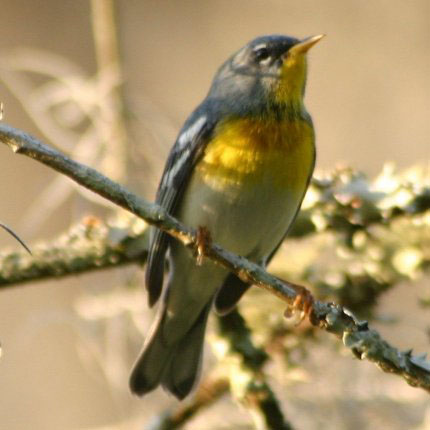3 Big data
As the PenguinWatch project has shown you, big citizen science projects have the capacity to produce very large data sets. Cornell University in the USA has been collecting data on birds [Tip: hold Ctrl and click a link to open it in a new tab. (Hide tip)] since 1966. About 400,000 people contribute each year, and an average of 7.5 million observations are recorded on their eBird site each month.
As an example of the value of big data sets, the bird checklists on the eBird site have been used to investigate the synchronisation of the arrival of migratory birds to the greening of trees as leaves appear (Mayor et al., 2017). As the leaves appear, the caterpillars that feed on them also develop, and caterpillars are a vital food source for the birds to feed to their young. Optimal timing is essential for the birds as they must avoid the cold but not arrive so late that they miss the glut of new caterpillars. The eBird database provided the dates on which 48 migratory bird species were observed, which enabled researchers to obtain an average arrival date for the population. The northern parula (Figure 3) is one migratory bird that is falling out of synchronisation. On average, the 48 species investigated were falling out of synchronisation by five days per decade, although some species were falling out by triple that rate. Many of the species were adapting their arrival date to cope with the change in greening of trees but were often not changing fast enough.
It can be seen by such studies that climate change threatens bird species. This particular study shows that migratory birds are adapting to rising temperature, but often not as fast as the climate is changing, the implication being that there will be an impact on species richness.

